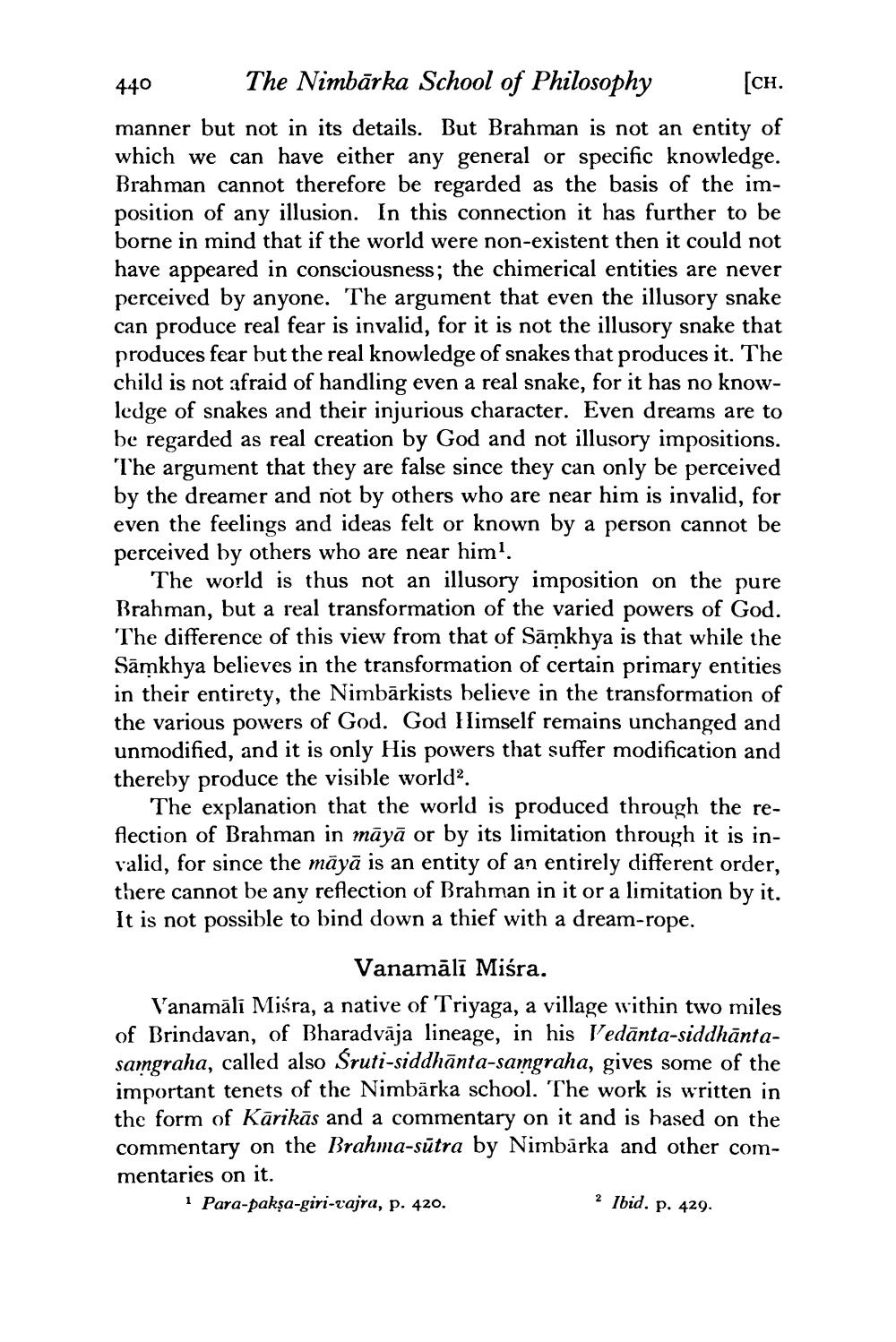________________
440
The Nimbarka School of Philosophy
[CH.
manner but not in its details. But Brahman is not an entity of which we can have either any general or specific knowledge. Brahman cannot therefore be regarded as the basis of the imposition of any illusion. In this connection it has further to be borne in mind that if the world were non-existent then it could not have appeared in consciousness; the chimerical entities are never perceived by anyone. The argument that even the illusory snake can produce real fear is invalid, for it is not the illusory snake that produces fear but the real knowledge of snakes that produces it. The child is not afraid of handling even a real snake, for it has no knowledge of snakes and their injurious character. Even dreams are to be regarded as real creation by God and not illusory impositions. The argument that they are false since they can only be perceived by the dreamer and not by others who are near him is invalid, for even the feelings and ideas felt or known by a person cannot be perceived by others who are near him1.
The world is thus not an illusory imposition on the pure Brahman, but a real transformation of the varied powers of God. The difference of this view from that of Samkhya is that while the Samkhya believes in the transformation of certain primary entities in their entirety, the Nimbārkists believe in the transformation of the various powers of God. God Himself remains unchanged and unmodified, and it is only His powers that suffer modification and thereby produce the visible world2.
The explanation that the world is produced through the reflection of Brahman in māyā or by its limitation through it is invalid, for since the māyā is an entity of an entirely different order, there cannot be any reflection of Brahman in it or a limitation by it. It is not possible to bind down a thief with a dream-rope.
Vanamāli Miśra.
Vanamāli Miśra, a native of Triyaga, a village within two miles of Brindavan, of Bharadvaja lineage, in his Vedanta-siddhantasamgraha, called also Śruti-siddhānta-samgraha, gives some of the important tenets of the Nimbärka school. The work is written in the form of Karikās and a commentary on it and is based on the commentary on the Brahma-sūtra by Nimbarka and other commentaries on it.
1 Para-pakṣa-giri-vajra, p. 420.
2 Ibid. p. 429.




